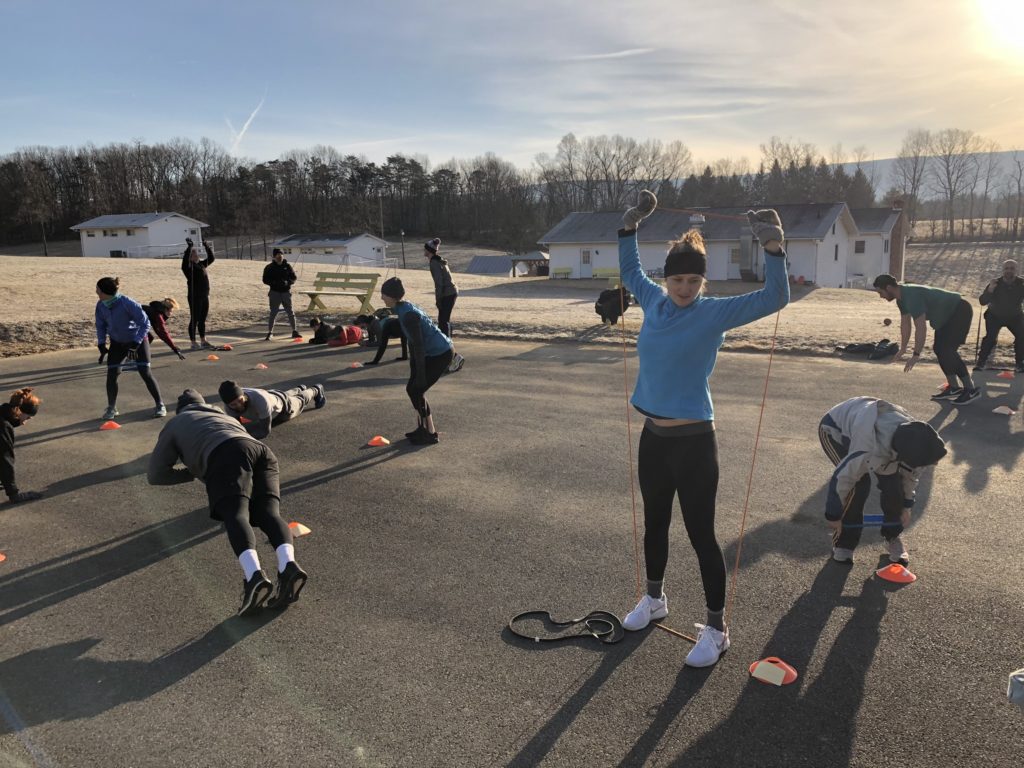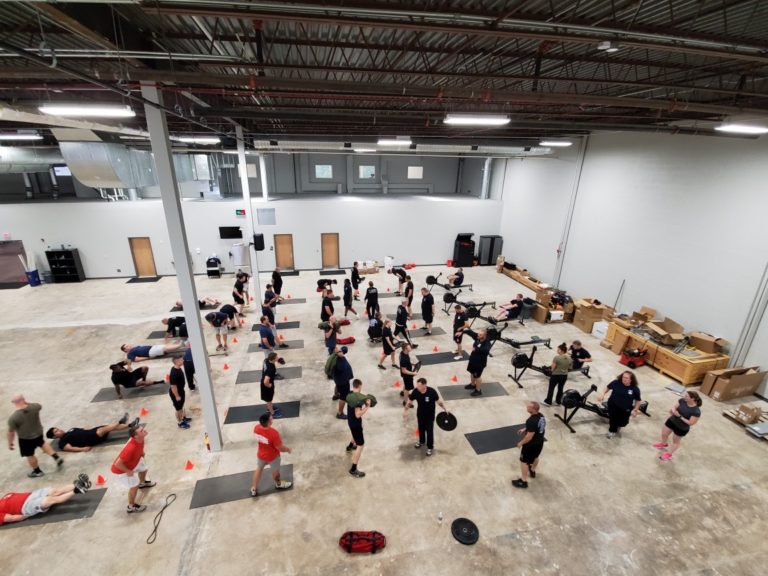By: Antigone Vesci
Published in O2X'sThe Armory Volume 1 Issue 3
As the leaves change colors and the temperature lowers, our time spent outdoors often follows suit. Excuses mirroring “It’s too cold to be outside” slide their way into our internal monologue, somehow justifying curling up on the couch and being inactive. One day, or moment in time, will not make a meaningful change to our health and wellness; however, trends bear considerable power, and as the temperature drops, our general health tends to trend downward with it. There are many reasons this happens annually, but focusing on the exercise component in isolation--perhaps the largest contributor--is the lack of knowledge on how to exercise safely in the cold.

Image provided by O2X.
It is true that cold weather can increase risk of injury and affect performance, but keep in mind that Olympic athletes compete and train in a diverse cold weather environment without adverse effects. Take cross-country skiing for example: the athletes competing in the 50km event are outside and competing for up to 2 hours in 20-30° Fahrenheit (F). While all reading this article will vary on the spectrum of our athletic ability, what we have in common is a core body temperature of 98.6°F. This temperature allows our body systems to function normally. If heat loss exceeds heat production, our body temperature will drop, putting us at risk for cold-related injuries and illness. There are two major types of cold injuries we hope to prevent: hypothermia and peripheral tissue injuries.
Hypothermia: Hypothermia is clinically defined by a core temperature below 35° Celsius (95°F). Initial symptoms include shivering and confusion, but as the core temperature continues to fall, numbness, lack of coordination, and slurred speech can occur. At core temperatures below 31° Celsius (87.8°F) there may be changes in cardiac rhythm.
Peripheral tissue injuries: Freezing peripheral injuries, or Frostbite, occur when tissue temperatures fall below 0° Celsius (32°F). It is most common on exposed skin (nose, ears, cheeks), but can occur in clothed hands and feet. The most common symptom is numbness.
Reducing the risk of cold related injury requires employing countermeasures to minimize the risk of hypothermia and frostbite, most often managed by an adequate warm-up indoors and coverage of exposed skin by adequate clothing insulation.

Image provided by O2X.
To keep moving safely in the cold, read what follows. Important to note: All temperatures reflect wind chill or the “feels like” temperature. All recommendations made within this article apply only in the absence of precipitation. Precipitation--rain and snow--will affect the risk of environmental cold injury. It is currently unclear in the literature at what rate of rain or snowfall, in conjunction with air temperature and wind rate, conditions become unsafe; however, it is clear that precipitation will increase the risk of environmental cold injury, so take extra caution when exercising in those environments.
Final Thoughts
Exercising in cold temperatures will take more mental and physical preparation, but the health benefits of staying active during the colder months far outweigh the risks. In fact, with respect to exercising in varying environmental conditions, greater risk actually exists at the extreme ranges of higher temperatures than at lower temperatures.
While there are low temperatures that make it unsafe to be outside greater than 60 minutes with exposed skin (<0°F), an indoor warm-up and adequate coverage of exposed skin will promote maintenance of a normal core body temperature and reduce risk of hypothermia and frostbite. In addition, exposure to sunshine keeps our Vitamin D levels in check! So find a friend to exercise with you, and invest in some good quality cold gear that you can layer up and is comfortable. If it’s raining or snowing or the ground is icy, don’t skip the movement, just move it indoors.
What’s your 1%?
| Wind-chill Temperature | Recommendations |
| <25°F | Take precaution in covering exposed skin with long sleeves, pants, gloves, and hats. Gloves and hats should remain on while outside. |
| <20°F | All exposed skin covered with previous recommendation. Anyone not participating in exercise should remain indoors. |
| <15°F | Clothing and participation recommendations from <20°F remain in place. Warm up and cool down activities should occur indoors. Minimize “down time” outside and consider reducing total time and/or intensity. |
| <10°F | Clothing and participation recommendations from <20°F remain in place. Warm up and cool down activities must occur indoors. Maximum exposure time is 60 minutes. Any further exposure that day must follow a period of time that includes complete rewarming and the changing of base layer clothing. |
| <0°F | Participation in outdoor activities is not recommended. |
About Antigone Vesci:
O2X Human Performance Specialist, PT, DPT, ATC, SCS, FAAOMPT
Antigone Vesci is a Sports Certified Specialist, currently working as an Athletic Trainer & Physical Therapist at Illinois Bone & Joint Institute in Glenview, IL. Prior to joining the IBJI team in August of 2017, she completed the University of Illinois at Chicago’s Fellowship in Orthopedic Manual Therapy. Antigone received her Bachelor of Science in Athletic Training in 2012, and her Doctorate of Physical Therapy in 2014 from Boston University College of Health and Rehabilitation Sciences: Sargent College. Antigone is a member of both the National Athletic Training Association (NATA), American Physical Therapy Association (APTA), and American Academy of Orthopedic Manual Therapists (AAOMPT). Antigone has worked across the country from Boston to L.A with all levels of human performance, from a spinal cord injured veteran to professional athletes. She is dedicated to providing evidence-based and patient-centered care to all age groups and demographics and has been with O2X since 2015. In her free time, Antigone likes to paint, sing and play music, and volunteer as a medical health professional. Antigone has volunteered for the Boston Marathon, Boston Half Marathon, and many other local sporting events since 2010. Antigone currently resides in Glenview with her husband, Brian.
References:
Castellani, J. W., & Young, A. J. (2012). Health and performance challenges during sports training and competition in cold weather. Br J Sports Med, 46(11), 788-791.
Cappaert, T. A., Stone, J. A., Castellani, J. W., Krause, B. A., Smith, D., & Stephens, B. A. (2008). National Athletic Trainers’ Association position statement: Environmental Cold Injuries. Journal of Athletic Training, 43(6), 640-658.
Bergeron MF, Bahr, R, Bartsch P, et al. International olympic committee consensus statement on thermoregulatory and altitude challenges for high-level athletes. Br J Sports Med. 2012;46:770-779.
